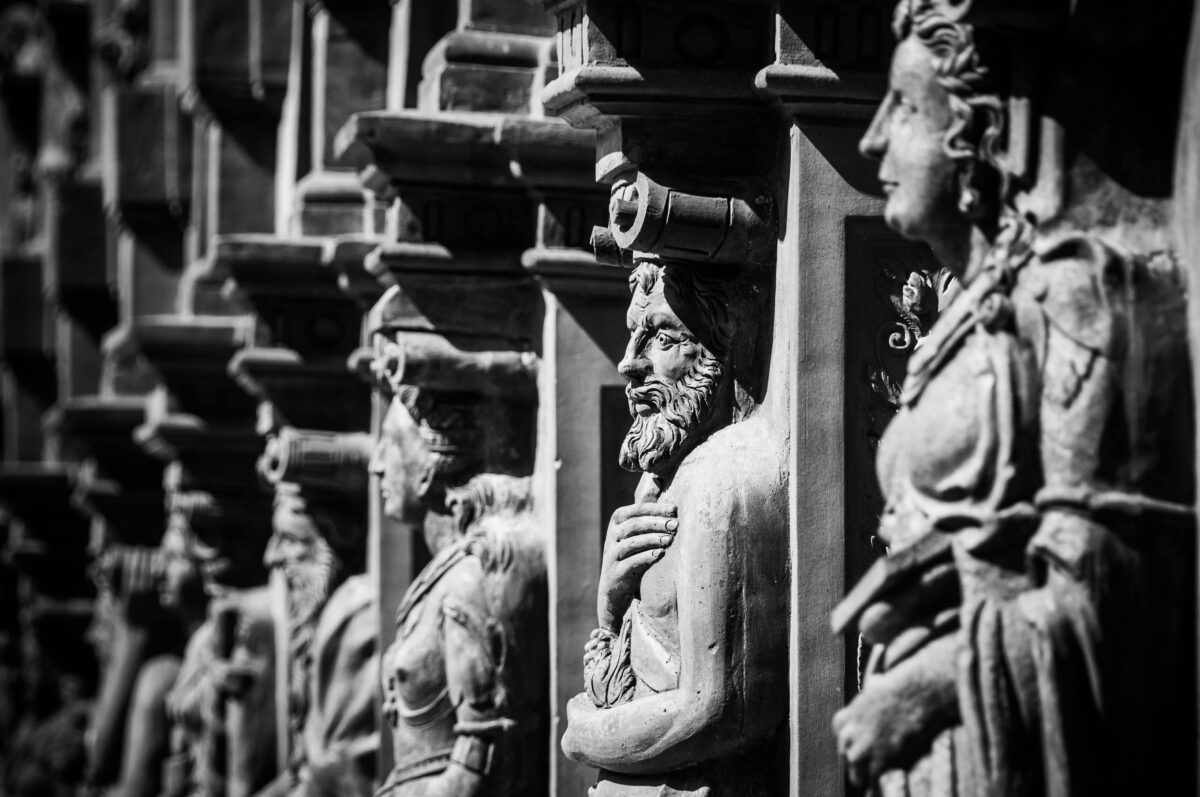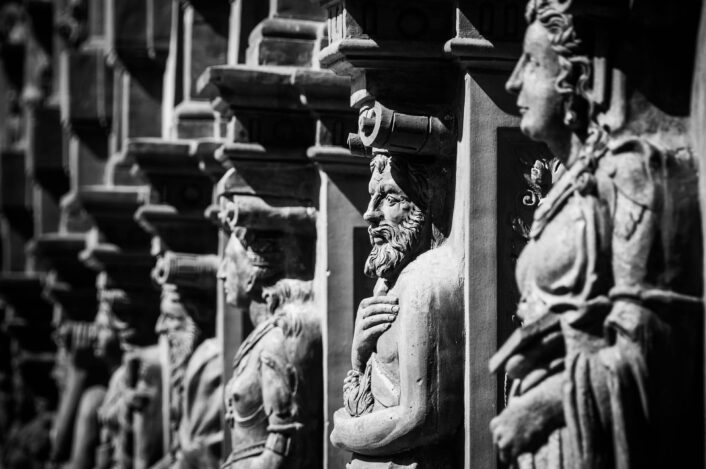Understanding 23andMe’s New Historical Matches Feature
harvey
on
May 8, 2024

Latest Posts
Table of Contents
Understanding 23andMe’s New Historical Matches Feature
Date of Content: April 24, 2024
Written by: Avanthika Nityanand
Reviewed by: Maarit Tiirikainen, PhD
23andMe has a new premium feature in their service that can reveal whether individuals are genetically related to historical figures. 23andMe’s new Historical Matches feature includes famous names such as Ludwig Van Beethoven. It also includes historically significant profiles such as a high-status Viking woman from the 9th century, an African female hunter-gatherer, or a Caquetio man from Curaçao dating back to pre-colonial times. 23andMe analyzes DNA to identify potential links between present-day individuals and their ancestors, offering insights into personal and human history. This scientific process helps individuals understand their ancestry by connecting them with past cultures and populations.
This new feature is available through its 23andMe+ Premium service. This feature allows users to identify potential genetic links to 335 historical figures by finding identical DNA segments that suggest a shared ancestor. The aim is to give users a method to trace connections to their historical lineage.
The company plans to expand the feature by adding more historical genomes. It will provide users with additional opportunities to explore their connections to history.
Dan Chu, Chief Product Officer at 23andMe, stated that “Historical Matches” represents a significant advancement in detecting genetic connections between modern individuals and historical figures. The feature uses peer-reviewed scientific methods and in-depth data analysis.
23andMe is the first prominent DNA ancestry service to offer genetic matching at this level with historical figures.

How does 23andMe Match to Historical Figures?
Research by Harvard population geneticist David Reich and Svante Pääbo, a Nobel Prize winner at the Max Planck Institute for Evolutionary Anthropology, has contributed to understanding ancient human populations, migration patterns, and the relationship between Neanderthals and modern humans. Their work has challenged traditional views on human history and migration and also provided insights into disease origins that may lead to new treatments.
23andMe’s Historical Matches feature extends beyond traditional ancestry tests that trace maternal or paternal lines. This new feature scans the entire genome to find identical DNA segments that link members to historical figures who lived hundreds or even thousands of years ago.
The process uses publicly available data, scientific research, and 23andMe’s relative-matching technology to establish these connections. Like the DNA Relatives feature, Historical Matches identifies potential links by finding shared DNA segments between 23andMe+ Premium members and historical figures. The system sets quality thresholds for the length of a shared DNA segment to minimize the likelihood of incorrect matches.
Members with a 23andMe+ Premium subscription may find that they have a connection to at least one historical figure, though, per 23andMe, these connections are generally distant. In some cases, the matches may indicate closer relationships.
Which Historical Figures Are Included?
The genomes included in 23andMe’s Historical Matches feature vary widely in age; some are from individuals who lived thousands of years ago, while others date back just a few centuries. Most remain anonymous, with notable exceptions such as Ludwig van Beethoven, who passed away in 1827.
The feature provides detailed reports on each historical individual, covering aspects of their lives, how they died, and the historical context of their times, including any artifacts found with them.
Beethoven’s genetic predispositions have been explored through DNA extracted from a lock of his hair. In 2023, researchers from the University of Cambridge and the Max Planck Institute published a study analyzing Beethoven’s genome to investigate his health issues, including hearing loss, liver disease, and gastrointestinal problems.
That same year, researchers from Harvard, the Smithsonian, and 23andMe analyzed the DNA of 27 African Americans, both enslaved and freed, who worked at a Maryland iron furnace during the American Revolution and the 19th century. Published in the journal Science, the study unveils the overlooked history of these individuals. It sets the ethical and technical benchmark for studying such burial sites. Of these, the genomes of nine individuals were well-preserved, though their names are lost. The study provides insights into the harsh and often brutal conditions they endured.
Overall, the Historical Matches feature includes 335 historical figures, mostly anonymous. These individuals are grouped into different historical categories based on the original published studies, providing a narrative of their lives and times.
Which Historical Groups Are Included?
The Viking Age
During the 8th to 11th centuries, known as the Viking Age, seafaring people from Scandinavia traveled extensively, establishing settlements and trading across Europe and the North Atlantic.
Catoctin Furnace Ironworkers
The Catoctin Furnace Iron Workers consisted of enslaved and freed African American laborers who worked at one of the earliest industrial sites in the United States during the 18th and 19th centuries. This furnace produced iron goods, including artillery used during the siege of Yorktown and supplies for the Continental Army.
Iron Age Taiwan
In Taiwan, the Iron Age was when the indigenous Atayal people began utilizing metals, such as bronze, iron, and silver, for their tools and artifacts.
The Ancient Eurasian Steppe
The Eurasian Steppe is a vast expanse of grasslands extending from modern-day Hungary and Romania to Mongolia and China. It served as a significant route for human migration and played a crucial role in spreading the Indo-European languages.
The First Peoples of the Caribbean
This group includes the indigenous communities that inhabited the Caribbean region from around 1000 BC until the arrival of Spanish explorers in 1500 CE.
The Genomic Formation of South and Central Asia
Contemporary South Asian populations are primarily descendants of a mix of two ancient groups known as “Ancestral South Indians” and “Ancestral North Indians.” Ancestral South Indians emerged from an admixture of ancient Iranian farmers and southern Asian hunter-gatherers around 2000 BCE. Ancestral North Indians originated from pastoralists who inhabited the eastern Eurasian Steppe during the Bronze Age.
Late Stone Age and Iron Age South Africa
While Southern Africa is renowned for sites associated with early human ancestors dating back hundreds of thousands of years, it also has sites from more recent periods. The Late Stone Age has no definitive end date in this region. However, the Iron Age began around 200 CE with the arrival of Bantu-speaking peoples skilled in ironworking.
Ancient Northern Chinese Millet Farmers
The area between the Yellow River and the West Liao River hosted some of the world’s earliest complex agricultural societies, which cultivated millet. This cultivation and subsequent human migrations from the region helped establish millet as the staple crop of Northeast Asia nearly 8,000 years ago.
The Ancient City of Beirut
Beirut, Lebanon, has been continuously inhabited for over 5,000 years and was controlled by various empires including Assyrian, Babylonian, Persian, Greek, Roman, Byzantine, Arab, and Ottoman. Each left a cultural but not always genetic legacy.
Is the 23andMe Historical Matches Worth It?
Several users on the Reddit forum have voiced a positive opinion on this new feature.
A user who goes by the handle ThePikminLord found the closest match with a Norse woman from Greenland, with more shared DNA than 74% of users and another with an infant girl from the Faroe Islands, with shared DNA greater than that of 71% of 23andMe users
The user Icy-You9222 reported approximately seven matches, with three from Denmark, two from Sweden, one from Estonia, and one from Ukraine. The highest percentage of shared DNA was with a young woman from Denmark, at 0.10%. As a Black American female, her Ancestry DNA results showed about 5% Swedish and Danish heritage and 1% Norwegian, while 23andMe reported 2.6% Scandinavian ancestry. She noted that these results seem consistent with her ancient Viking ancestry and expressed enjoyment in learning about her genetic background.
References
- https://blog.23andme.com/articles/23andmes-historic-matches
- https://www.ncbi.nlm.nih.gov/pmc/articles/PMC2842210/
- https://www.downtoearth.org.in/blog/science-technology/the-nobel-for-svante-p-bo-is-an-attempt-to-redefine-modern-man-85353
- https://www.cam.ac.uk/stories/beethovens-dna-reveals-health-and-family-history-clues
- https://hms.harvard.edu/news/historical-dna-study-connects-living-people-enslaved
- https://en.natmus.dk/historical-knowledge/denmark/prehistoric-period-until-1050-ad/the-viking-age/
- https://www.nps.gov/cato/learn/historyculture/furnace.htm
- https://china.usc.edu/calendar/introduction-taiwan’s-indigenous-people-and-atayal-tayan-tribe
- https://www.reddit.com/r/23andme/comments/1b9b9tn/my_historical_matches_i_caved_in_and_bought/
- https://www.reddit.com/r/23andme/comments/1b9b9tn/comment/ktvalmv/
Customer Reviews




*Understanding your genetics can offer valuable insights into your well-being, but it is not deterministic. Your traits can be influenced by the complex interplay involving nature, lifestyle, family history, and others.
Our reports have not been evaluated by the Food and Drug Administration. The contents on our website and our reports are for informational purposes only, and are not intended to diagnose any medical condition, replace the advice of a healthcare professional, or provide any medical advice, diagnosis, or treatment. Consult with a healthcare professional before making any major lifestyle changes or if you have any other concerns about your results. The testimonials featured may have used more than one LifeDNA or LifeDNA vendors’ product or reports.
- Category: DNA Testing & Analysis



